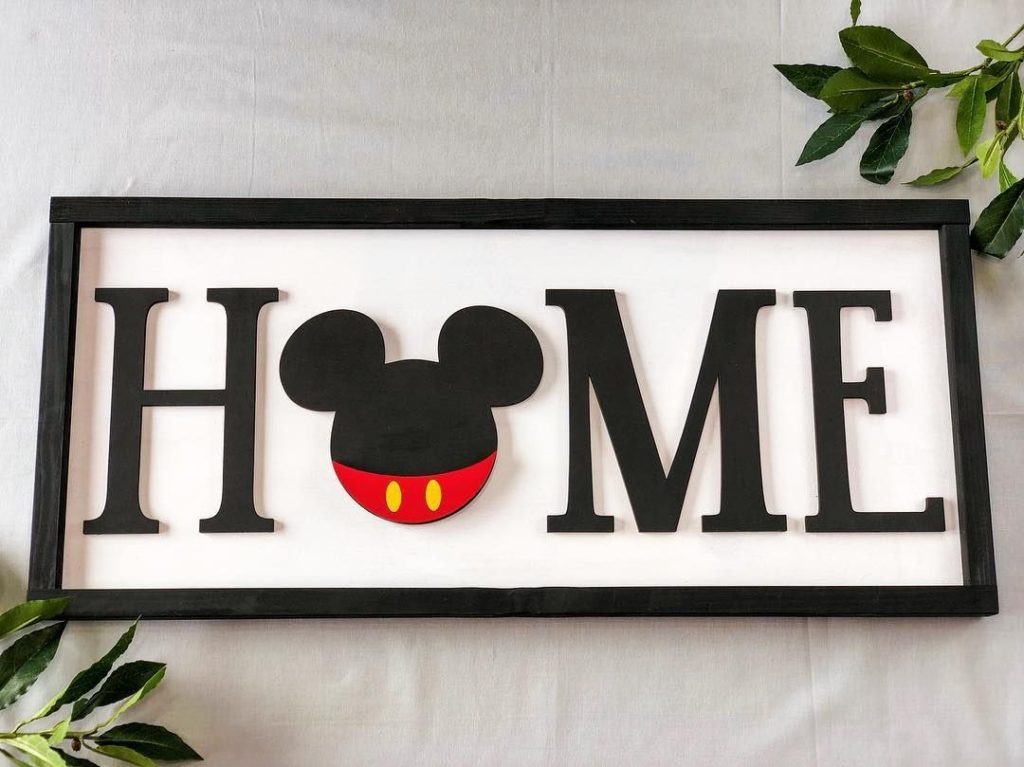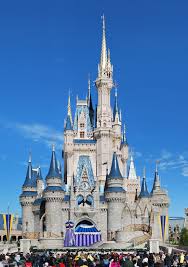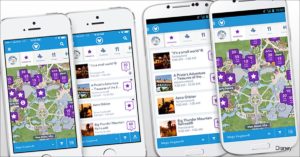What We Miss When We Miss Disney World
How Jewish notions of exile help make sense of people's sadness during the pandemic as Disney parks are closed
 Last August, I checked into the Disneyland Hotel to do research at a fan convention. Goofy was crouched ten feet away from me, in cahoots with a small visitor, his giant green hat bobbing, and I flashed back to a memory of my earliest trip to a Disney park, on the verge of turning five years old. I realized that Goofy was the first character I had ever met, and paused in the middle of the transaction, feeling a bit verklempt. “I’m from the East coast, so I usually go to Disney World,” I told the man who was checking me in. “I haven’t been to Disneyland since 1983.”
Last August, I checked into the Disneyland Hotel to do research at a fan convention. Goofy was crouched ten feet away from me, in cahoots with a small visitor, his giant green hat bobbing, and I flashed back to a memory of my earliest trip to a Disney park, on the verge of turning five years old. I realized that Goofy was the first character I had ever met, and paused in the middle of the transaction, feeling a bit verklempt. “I’m from the East coast, so I usually go to Disney World,” I told the man who was checking me in. “I haven’t been to Disneyland since 1983.”
“Welcome home,” he replied.
This is how Disney religion operates. “Home” is how devoted Disney fans, and the Walt Disney Company itself, refer to the company’s theme parks. On social media tourists count down the days until they can go “home” again. They post pictures snapped the moment they pass under the road signs declaring “Walt Disney World: Where Dreams Come True.” Often, the captions simply read, “Home!” Disney as “home” always sounded a bit Christian to me: a longing to be in the world but not of the world, a sense that the real world, the better, truer world, is in fact elsewhere.
But now, in the midst of a global pandemic, as I watch Disney fans recreate It’s A Small World in their living rooms and Splash Mountain in their backyards (#HomeMadeDisney), I am reminded, instead, of Judaism, a tradition with a long history of reckoning with exile. The U.S. Disney parks have been closed since March 16. Even when they reopen, as Disney World is slated to do on July 11, they will not be the same: no fireworks, no parades, no hugs from the characters. Disney acolytes are figuring out how to rebuild their way of being during the loss of their center. They are not the first people to face this challenge. Disney fans today are like Judeans after the fall of the temple in Jerusalem.
***
Judaism might not exist were it not for two great catastrophes, two losses, in the ancient world: the destruction of the first Jerusalem temple by the Babylonians in 586 B.C.E. and the destruction of the second temple by the Romans in 70 C.E. The first of those events catalyzed the process of collecting and editing the books that would form the core of the Hebrew Bible. The second led to the eventual compilation of the Talmud and the rise of Judaism itself: the development of a system that focused on the home, the study house, and the synagogue, on commandments and learning, rather than on temple-based rituals. Out of loss, came something new. The Talmud, an encyclopedic compendium of law and legend, is one giant attempt to build a new system of life: one with memory of the old system— the temple and its sacrifices— at its core.
This is what all of us are coping with right now, not only Disney fans. We are striving to remake our social worlds, our sacred worlds, on new terms. We stream prayer services, hold graduations on Zoom, we celebrate and mourn virtually. It’s not the same. And what about our pilgrimages? What do we do when the navel of our world is lost?

Photo by Matt H. Wade
Though decades of critics have decried Disney as simulacra, for devoted Disney visitors, Disney World is not just real— it is the most real place there is. That’s what lay behind how I was greeted in Disneyland, at a place where I had not set foot in nearly four decades. Disney parks are where you go to make your life more real. Just won the Superbowl? What makes it real? “I’m going to Disney World!” Graduated from high school or college? There’s a pair of mouse ears for that. Nearly every time I’ve been seated in a restaurant on Disney property— even when I am alone— the hostess has asked: “Are we celebrating anything special today?” Disney parks cement our achievements— and our losses, too— with a heaping of pixie dust.
Disney is also a place where we can safely play out our emotions— perhaps, for the more repressed among us, Disney gives us permission to have emotions. Last fall, an episode of Invisibilia told the story of Richard Kraft, a man who grew up in a family that discouraged expressing “big emotions.” Kraft found Disneyland to be a place of release and comfort after a great loss. Shaken by a death in the family, he found himself driving to Disneyland and boarding Pirates of the Caribbean. “There’s a finite amount of time that you’re immersed in anything. And so I can escape within the attraction for a finite amount of time, under very controlled conditions, and then, I can reemerge out of it and be ok,” he told NPR’s Meghan Keane.
The promise of a limited duration is the brass ring we reach for the most during this pandemic. What would we give to know that we only need to endure social distancing for the two minutes and twenty-five seconds it takes to ride Seven Dwarfs Mine Train, or worry about our family’s health for the time it takes to embark on the Jungle Cruise? What if the Israelites who lost the first temple had known, in advance, the precise duration of their exile, and that it wasn’t forever, because Cyrus of Persia would come along and permit some of them to return? Disney promises us something even better: a time limit and safety. For a high price, we know that the fear we experience in the darkness of the Haunted Mansion is just that: fear itself, in darkness that lasts only as long as our doom buggies careen along the track.
The whole world is a doom buggy now. It always has been. But the pandemic has revived that knowledge, the sense that no activity is ever truly risk free— though some of us, usually dependent on our social class, and, especially our race, get to be safer than others.
***
Religion is a business of bodies. Ancient Judeans shifted from a tradition where you buy a pigeon to sacrifice in the bustling temple, where the priest sprinkles the blood of large animals on the congregation, to a practice where you gather in study houses to debate. Over centuries, religion became rocking quietly in prayer or reading a holy book, instead of gathering in droves for an agricultural festival. What will it mean to worship Disney differently? For Disney World, too, is—was?— a religion of spaces, of grand vistas, miles on your feet each day in the parks, a story written onto your sweaty, blistered body as it moves from land to land, feeling the heat of the sun, the soothing sweet chill of Dole Whip. Most of all, it is a religion of crowds. Its pilgrims normally cram shoulder to shoulder in lines, shuffling in and out of theaters that seat hundreds, jostling for a better view in a sea of tourists watching fireworks. For the devoted, the pleasures of ecstatic community go hand in hand with the pain of heat, lines, and crowds. When the parks reopen, they will be half empty, without the sea of humanity that is their hallmark.
Now, for most fans, Disney is lived out in the quiet climate controlled spaces of our own homes, a religion of pixels and mementos, but also an embodied panoply of recreated recipes for park treats and families imitating the jerky moves of audio animatronics. This dialectic was not born of the pandemic. It is, in fact, an original feature of the whole system. In the 1950s, Walt Disney secured crucial funding to build Disneyland through a partnership with ABC. On Sunday nights, families gathered around their new-fangled consoles and tuned into the Disneyland television show to watch as the park rose above Anaheim orange groves. Through cathode tubes and flickering black-and-white screens, they were transported into the phantasms of Uncle Walt’s imagination. Disney religion has always been, in part, a home religion. What is new, now, is the feeling of total exile. The flag goes up daily on Main Street. None of us is there to see it.
Exile is the harbinger of messianism, and messianism is always nostalgic: the longing for a return to somewhere even better than what we remembered. This, too, is a feature, not a bug. It is at the heart of what Walt Disney always did, creating a Victorian main street on which no one had ever lived.
Pilgrimage is more of a rarity than not. Most Muslims don’t take part in the haj to Mecca every year—it is often a once in a lifetime event. Most kids in the 1950s did not get to go to Disneyland. The dream was the reality. For many contemporary Disney fans, visiting a Disney park is a dream long deferred, something saved up for over years. Even for frequent out-of-state visitors— the sort who travel to Orlando once or twice a year—thinking about Disney World is a teleological exercise. They are always imagining a future trip that is more perfect than any trip could possibly be.
Yet with the parks closed, it is a curiously empty dream.
 A confession. I am one of those dreamers. Since my teenage years I have had what some might call a mild obsession with the best strategies for visiting Disney World, a tendency I repressed for some time, then let out of the bag again a few years ago when my daughter turned five. Ever since that year, I have had the Disney World app installed on my phone. The app lets you see, in real time, the wait times for a given attraction, that day’s showtimes, and more. Sometimes, when I’m having a bad day, I comfort myself by opening the app and checking ride times, or seeing which characters are out, and where, calmed by the knowledge that 1,049 miles south of me, someone is waiting in a 110-minute line for Space Mountain. Now, when I open the app, the park map is blank. No one is waiting in that line. Something is missing from the universe.
A confession. I am one of those dreamers. Since my teenage years I have had what some might call a mild obsession with the best strategies for visiting Disney World, a tendency I repressed for some time, then let out of the bag again a few years ago when my daughter turned five. Ever since that year, I have had the Disney World app installed on my phone. The app lets you see, in real time, the wait times for a given attraction, that day’s showtimes, and more. Sometimes, when I’m having a bad day, I comfort myself by opening the app and checking ride times, or seeing which characters are out, and where, calmed by the knowledge that 1,049 miles south of me, someone is waiting in a 110-minute line for Space Mountain. Now, when I open the app, the park map is blank. No one is waiting in that line. Something is missing from the universe.
“How can we sing a song to the Lord on alien soil?” This poetic cry in Psalm 137 reminds us that religion’s portability is never simple. But the Judeans eventually came up with an answer that worked for them: write it down. Write down the stories and laws so you don’t forget them in a new place. Even more dramatically, after the fall of the second temple, generations of rabbis codified their debates on how and when to do what we now call Judaism.
They knew the best way to keep a people together came in bringing holiness into the quotidian realm. The Walt Disney Company knows this too. Using the hashtag #DisneyMagicMoments, they are giving fans a habitus, a way to recreate their lost temple, daily. Sad that movie theaters are closed and you can’t come to Disney World to meet the characters? Learn how to draw them from Oscar-winning animators. Miss Disney park treats? Make this recipe for “The Grey Stuff” (“It’s delicious!”) from the Be Our Guest restaurant.
These digital inscriptions of Disney life do not only come from the company itself. The one I found most moving came from over 100 Disneyland cast members, “parade alumni,” who recreated 2005’s “Parade of Dreams.” In their living rooms and backyards, on beaches and in an eerily deserted Times Square, they individually danced their roles, sometimes with a homemade costume or prop, recreating the original choreography. I watched the tiny boxes of dancers on You Tube, all edited together with the parade soundtrack backing them. Disney choreography has a particular quality of exaggeration to it, arms stretched in extraordinary arcs so that gestures will register with crowds even when the dancer is on top of a float or inside a bulky costume. I had never seen this parade, but it brought me back to dozens of others, my experience of sitting on broiling concrete, enraptured. “Welcome to our family time, welcome to our happy-to-be time!” the chorus chimed. Now our family times happen in tiny boxes, too.
***
On May 11, Shanghai Disneyland re-opened with limited capacity and new social distancing measures in place. It was heralded as a crucial emotional benchmark on the road to the new normal. The metaphysical stakes of the Walt Disney Company were as clear as they have ever been. “Our brand is about hope,” Joe Schott, the president of Shanghai Disneyland, told The New York Times.
 As the plans for Disney World’s reopening emerge, some fans are overjoyed. I am maudlin instead. Schooled in the history of the world’s religions, I know that rebuilt temples, material and virtual, are never the same as the ones that came before. With over 100,000 Americans dead, I am not ready to reach for hope.
As the plans for Disney World’s reopening emerge, some fans are overjoyed. I am maudlin instead. Schooled in the history of the world’s religions, I know that rebuilt temples, material and virtual, are never the same as the ones that came before. With over 100,000 Americans dead, I am not ready to reach for hope.
What we need the most from Disney right now is the company’s unmatched ability to help us mourn. Disney has always been tinged with what Gary Laderman calls “the Disney way of death.” Walt himself was obsessed with, and fearful of, his own mortality, and the fairy tales on which so many Disney films are based were rooted in loss.
And so, when I watched the first Disney Family Sing Along in our darkened living room, I was not surprised that Beyoncé’s heartbreaking rendition of “When You Wish Upon a Star” felt like grief to me. In the absence of meaningful collective, national mourning, what catharsis there is to be found will have to come from other places.
What we miss when we miss Disney World is an abundance of feelings: joy and fear, grief and mirth. Disney captivates because we get to be in the story: to fly over Neverland, to lift the sword from the stone. Survival means learning to tell the old stories in a new land. It’s not always pretty. Psalm 137 ends with an immensely graphic fantasy of retributive violence. In the middle, though, it balances on the precarious ledge between celebration and sackcloth that we will experience many times in the months and years to come. “If I forget you, O Jerusalem, let my right hand wither; let my tongue stick to my palate if I cease to think of you, if I do not keep Jerusalem in memory even in my happiest hour.” Someday we may return to our earthly Jerusalems, whether they are Cinderella Castle or the most powerful refuge of all: the arms of our loved ones.
The memory of our exile will linger.
Jodi Eichler-Levine is the Berman Professor of Jewish Civilization and Associate Professor of Religion at Lehigh University. She is the author of Painted Pomegranates and Needlepoint Rabbis: How Jews Craft Resilience and Create Community (forthcoming October 2020) and Suffer the Little Children: Uses of the Past in Jewish and African American Literature. Her work has appeared in the Washington Post, Salon, Kveller, Killing the Buddha, Religion Dispatches, and other venues. She is currently working on a book-length study on the intersections of religion and Disney.